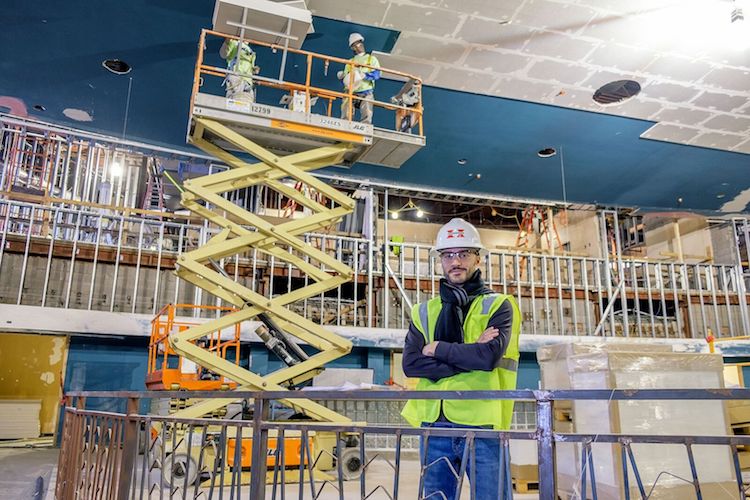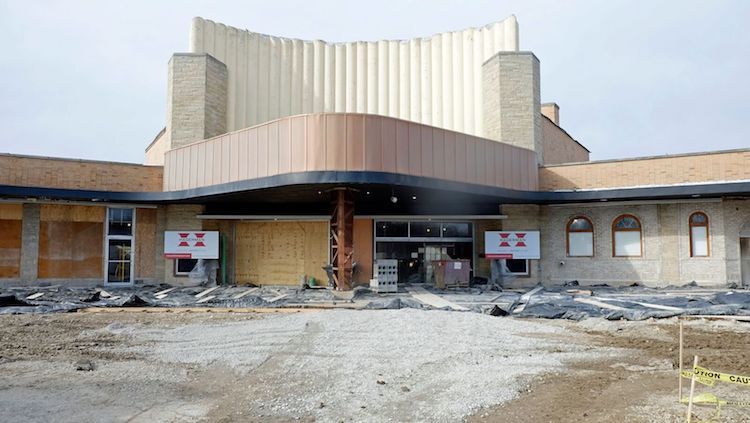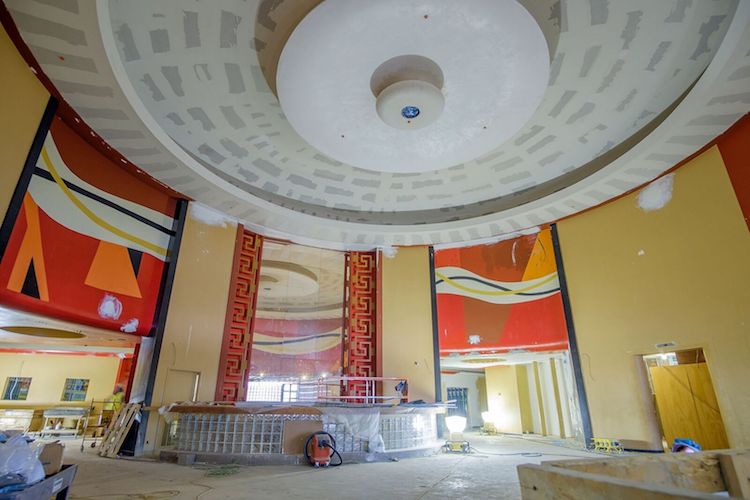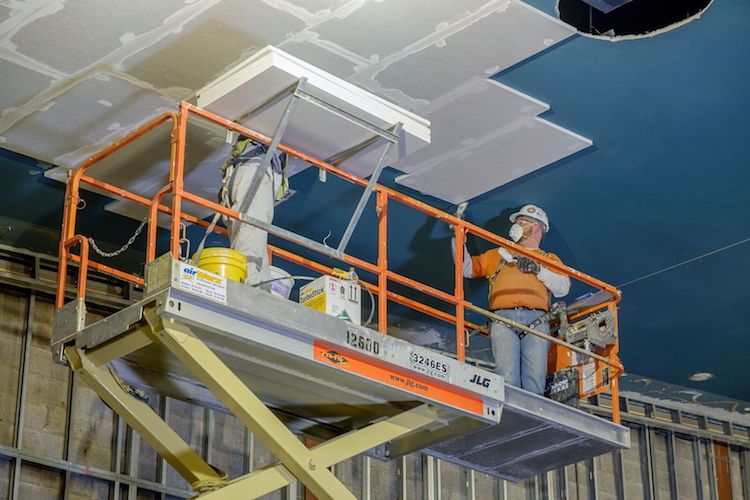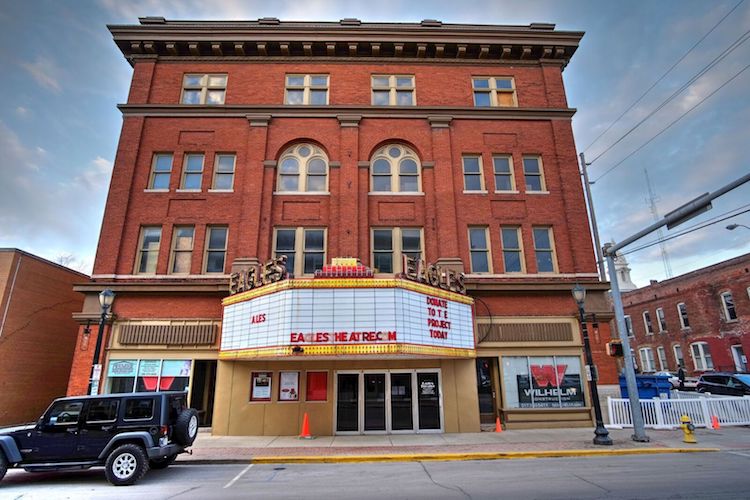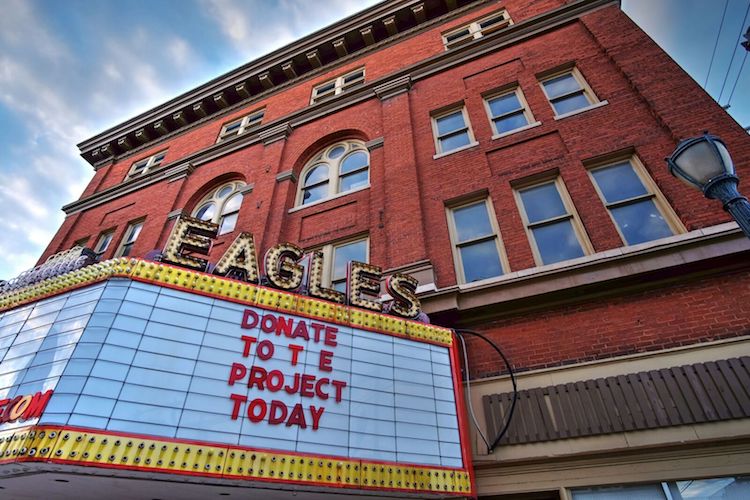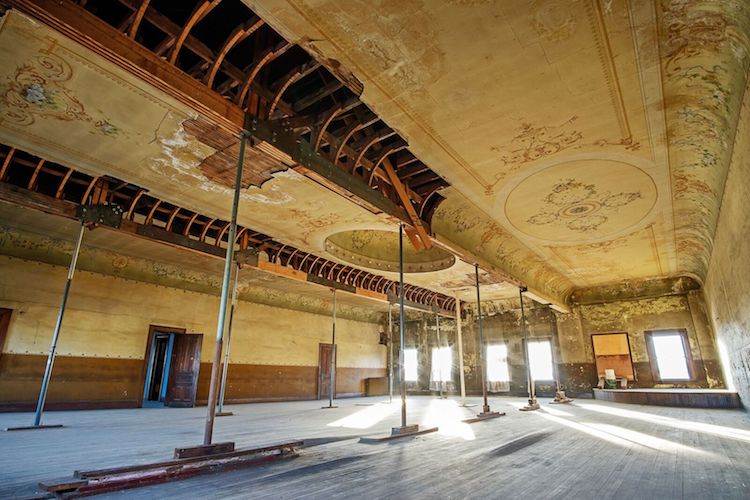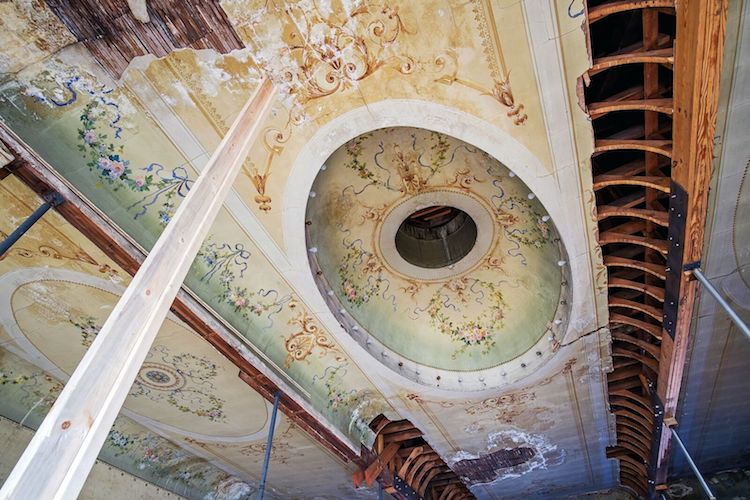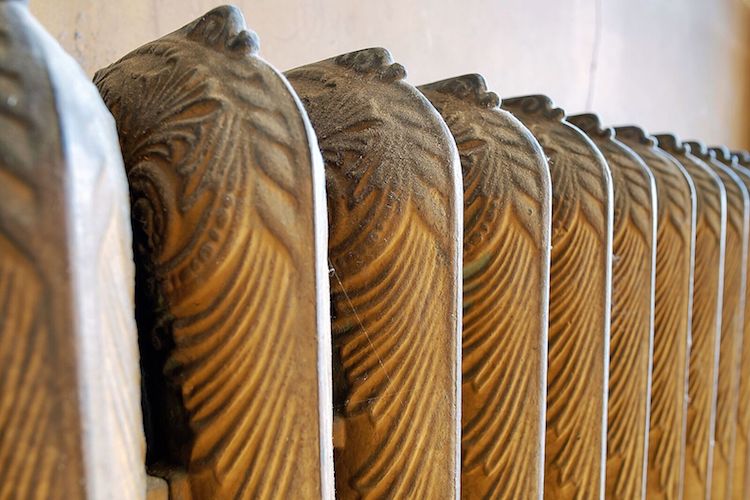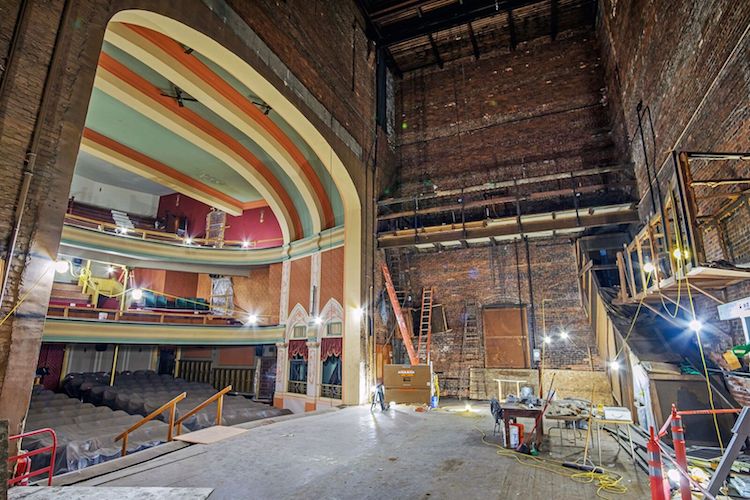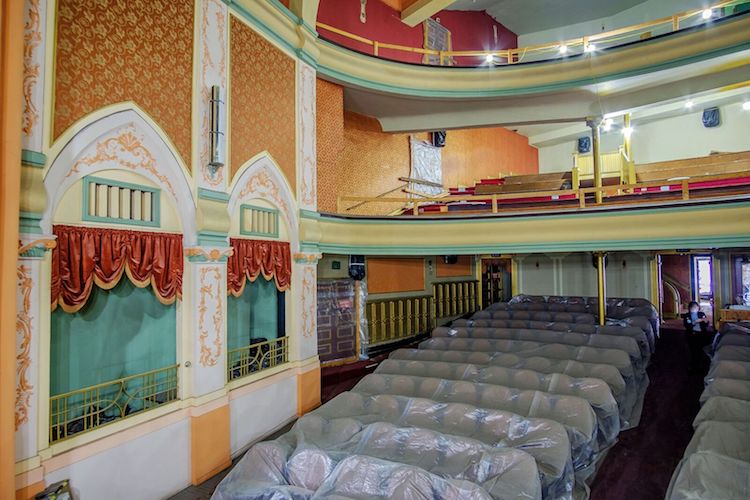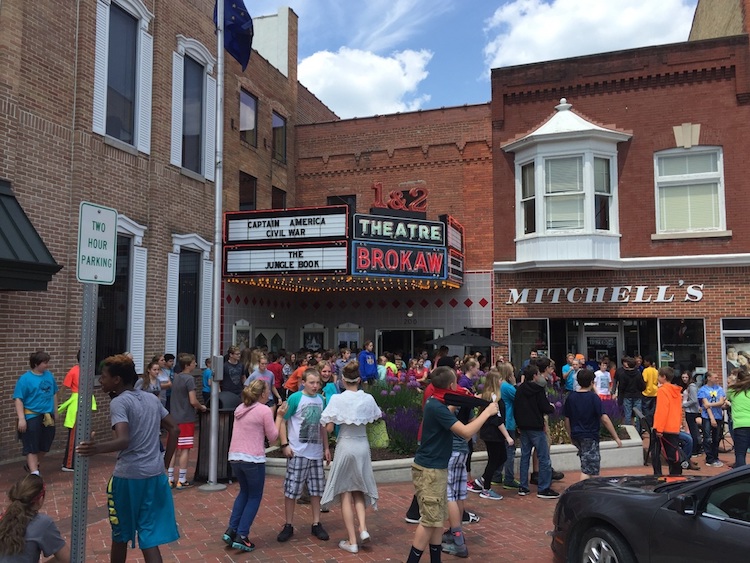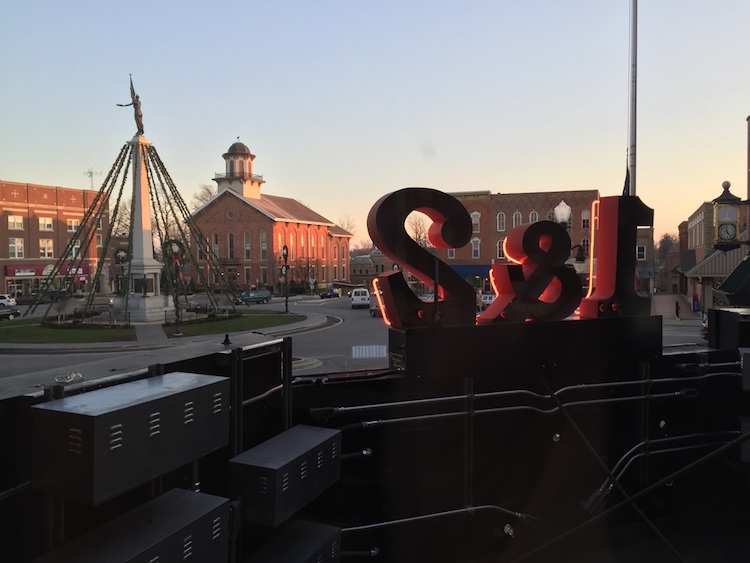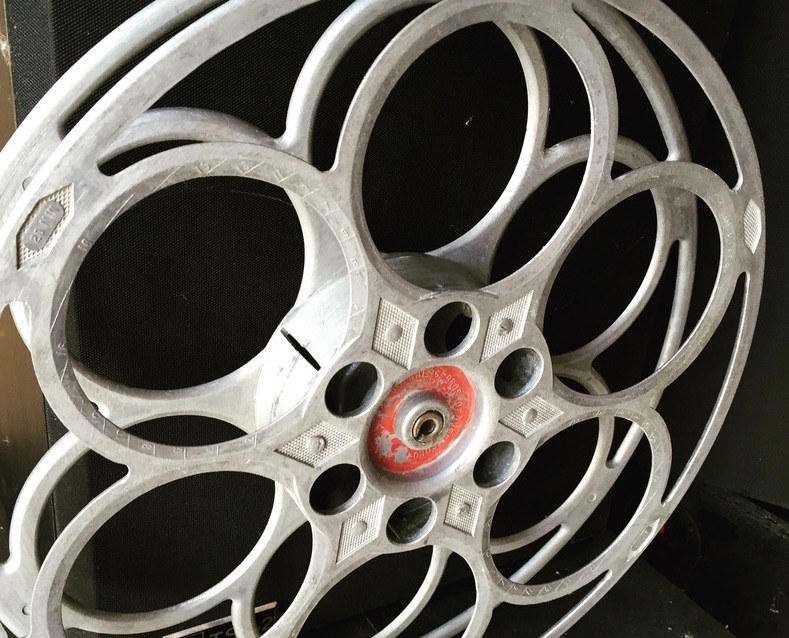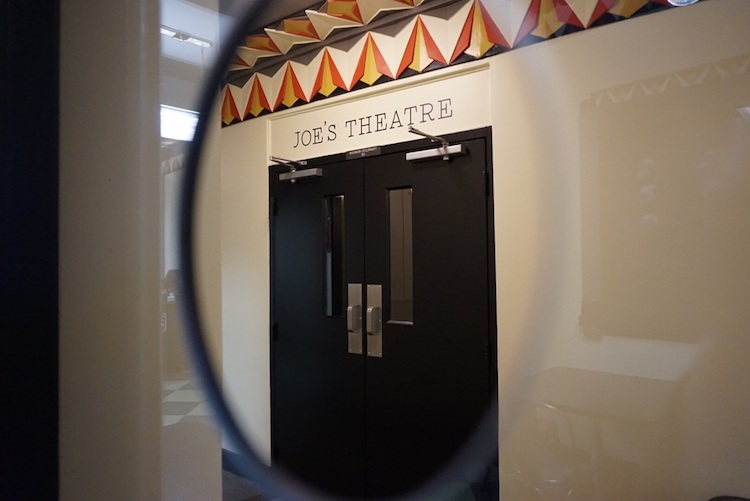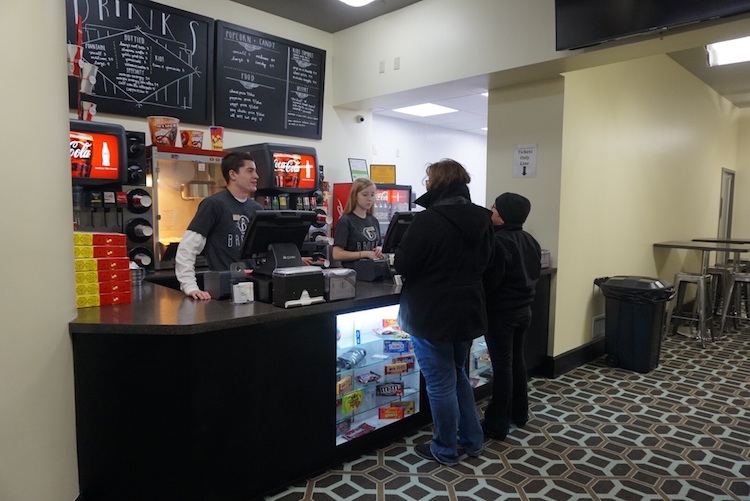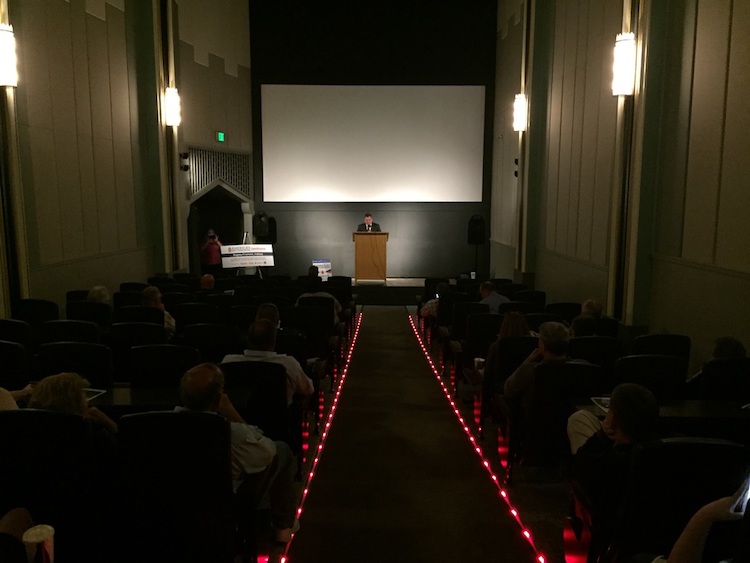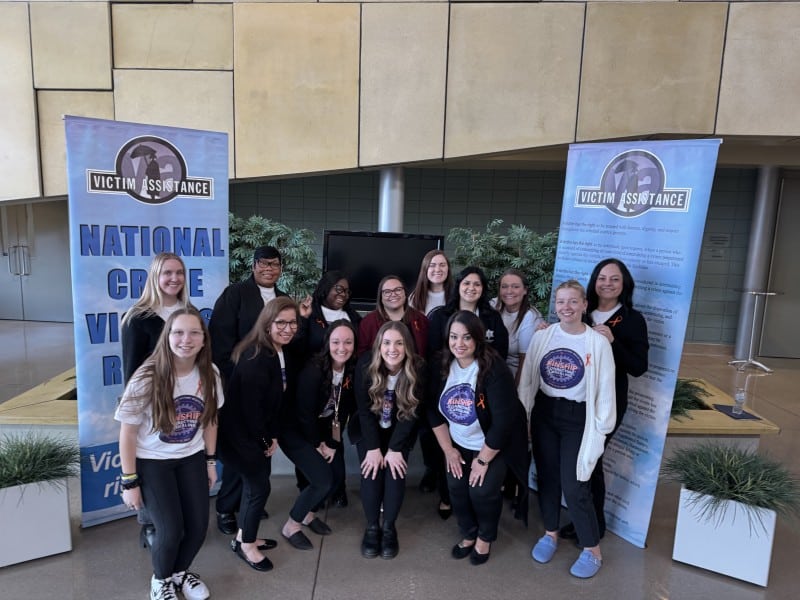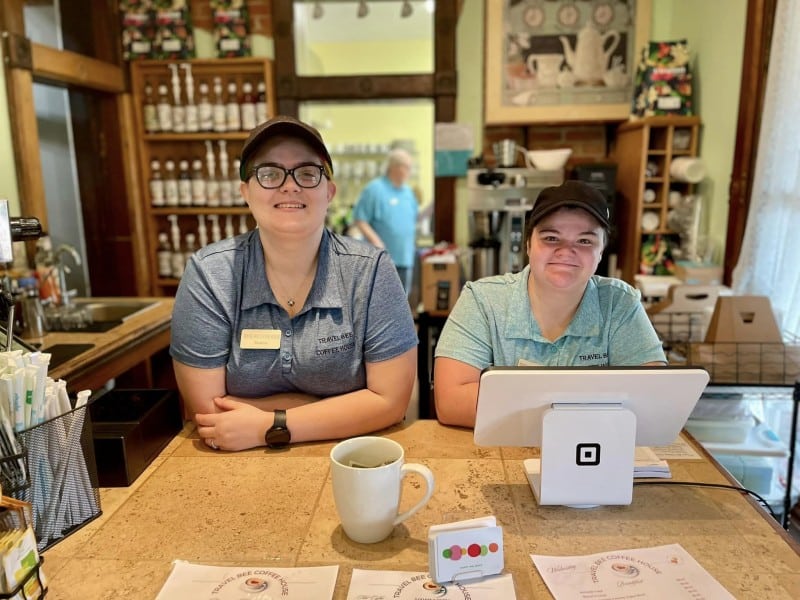Historic theatre renovations create a sense of ‘place’
These projects are taking on new lives of their own, reinvigorating their communities with fresh visions and potential, full of local character.
Rick Kinney drops into his seat at the Friendly Fox.
He’s wearing a band t-shirt and a casual zip-up jacket, fresh off a coffee meeting he just got out of a few tables over. He orders a tea, and though he’s tired, and though he’s busy, his eyes are alive with excitement as he talks about the Clyde Theatre.
“It’s booking shows,” he says, leaning across the table.
Booking shows. After six years of raising $5 million in public and private funds for a historic renovation, after hashing and rehashing plans and overextending relationships, after being told it couldn’t happen, and then it did.
It’s booking shows.
Since Kinney bought the Clyde as an ambitious 20-something with an outrageous $500 in 2012, his journey to turn the historic movie theatre into a stand up concert venue has been well documented in the local press.
He’s done interviews. Led tours. Posed for photos, and cast a vision for the space, set to be the largest general admission standing room theatre in Indiana able to host up to 2,100 guests.

But something they don’t tell you when you buy a historic theatre for $500 is that it’s going to cost you a lot more than that—in time, in money, in exhaustion and disbelief.
Harder yet is raising the support for a large, for-profit venture without sacrificing a lot of the control over what you’re trying to create in the process.
Thankfully, Kinney says, his funders have supported his vision and allowed him to create the type of high-energy space he always envisioned as a drummer in local bands.
“If we want to legitimately attract and retain the young demographic, we need to look to that same demographic to create the vibe they want,” Kinney says. “Our partners really see that.”
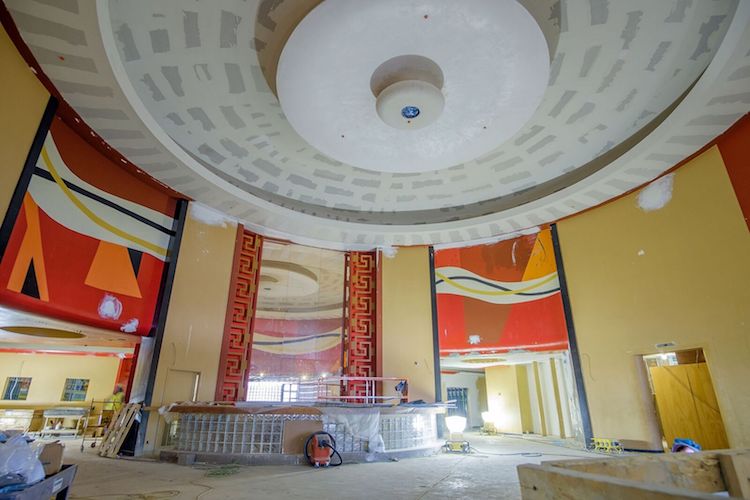
Kinney’s company, Even Keel Holdings is partnering with Chuck and Lisa Surack of Sweetwater Sound, to bring the Clyde Theatre back to life.
They and others in the local music community hope it will be a catalyst that ignites Quimby Village, and eventually, all of northeast Indiana with a new level of excitement and local pride.
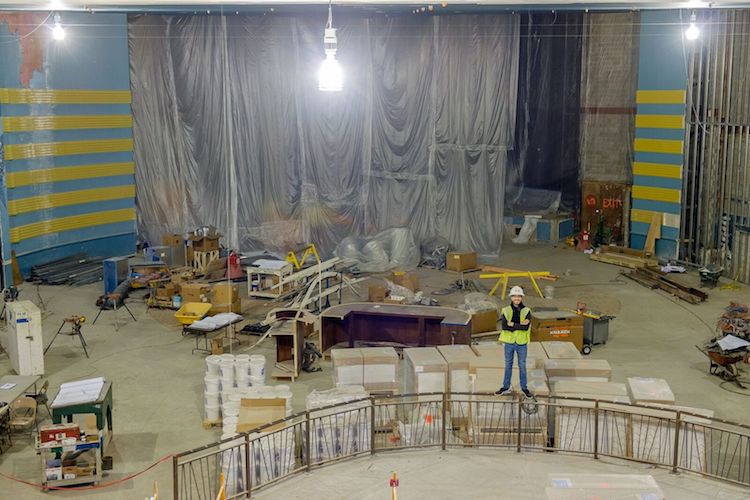
The Clyde was built as a movie theatre in 1951. It closed its doors in 1993, and this spring, it will open again with a new purpose for a new time.
But while its story is certainly unique, it’s not necessarily rare.
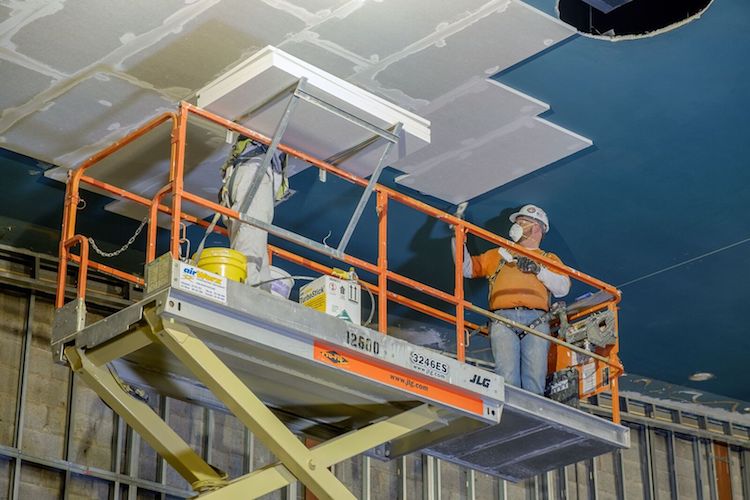
Around the region, similar historic theatres are taking on new lives of their own, reinvigorating their communities with fresh visions and potential, full of local character.
Together, they are symbols of changing times in the region—physical manifestations of the past that drives us forward, and critical reminders that while the price of reusing historic spaces is high, the price of losing them is much higher.
“What creates a sense of place is our connection with unique, local experiences,” Kinney says.
These are the projects creating a sense of place in northeast Indiana.
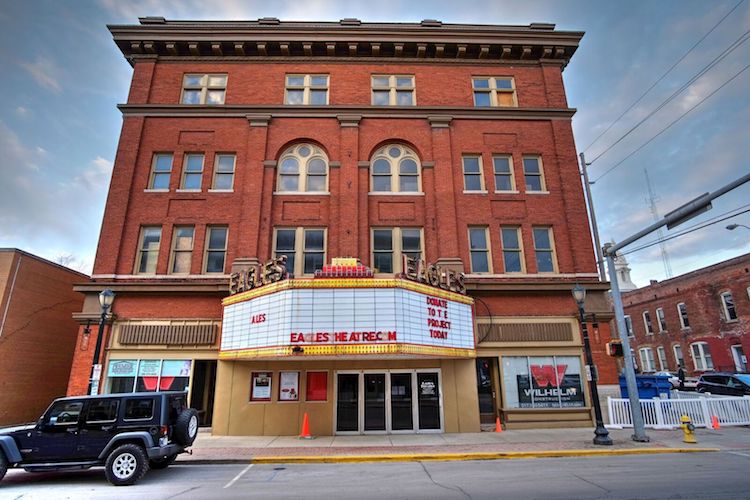
The backdrop of the human experience
If you grew up in Wabash, then you know Eagles Theatre.
It sits at the heart of downtown, and it has the type of regal marquee you might see sandwiched between brownstones on the busy streets of Los Angeles or New York.
Originally built in 1906, the theatre has undergone several renovations over the years, giving it an art deco vibe in the 1930s, and modern features like digital technology in recent times.
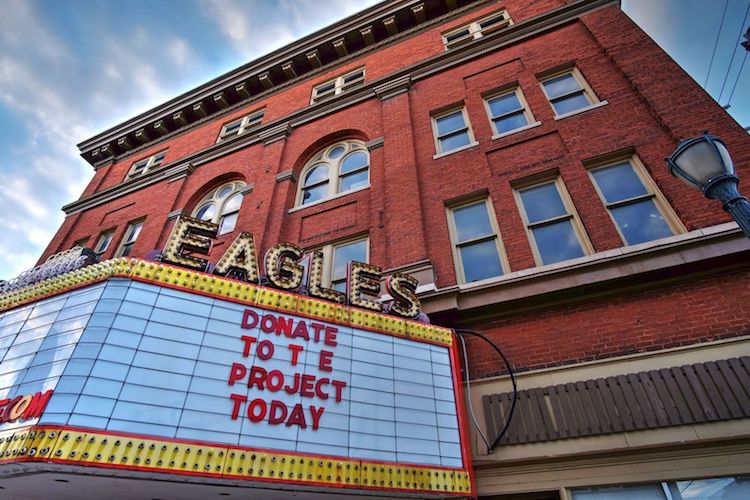
It started as a venue for traveling vaudeville performances, or live acts akin to blend of a live theatre and a circus.
Then after about 15 years, the space was converted into a fixed-screen movie theatre in the 1920s, and it’s been a movie theatre ever since.
But to locals, it’s so much more than that.
“I talk about it as part of the social fabric of this community,” says Cathy Gatchel.
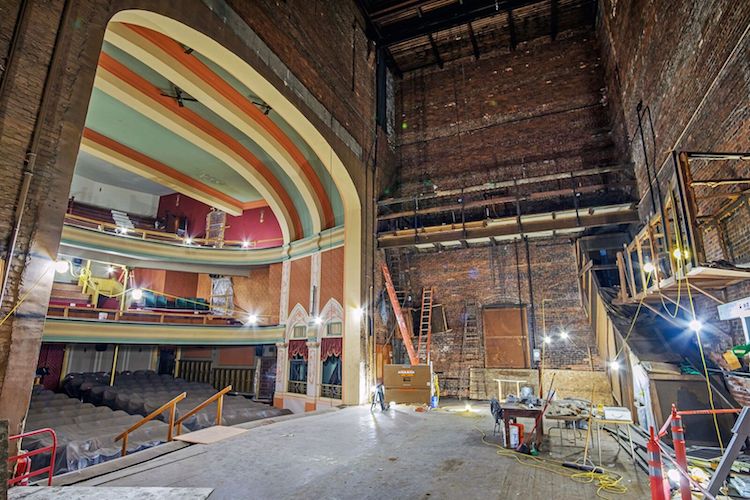
As Vice President of Development and Marketing at the Honeywell Foundation that owns and operates the theatre, Gatchel grew up in Wabash, and still considers the theatre a critical part of local life.
From the stories she hears from patrons, it’s a place where first dates have turned into marriages, where starry-eyed childhood experiences have inspired imaginations, and where movie outings have made best friends.
“It has been the backdrop of the human experience here in Wabash,” she says.
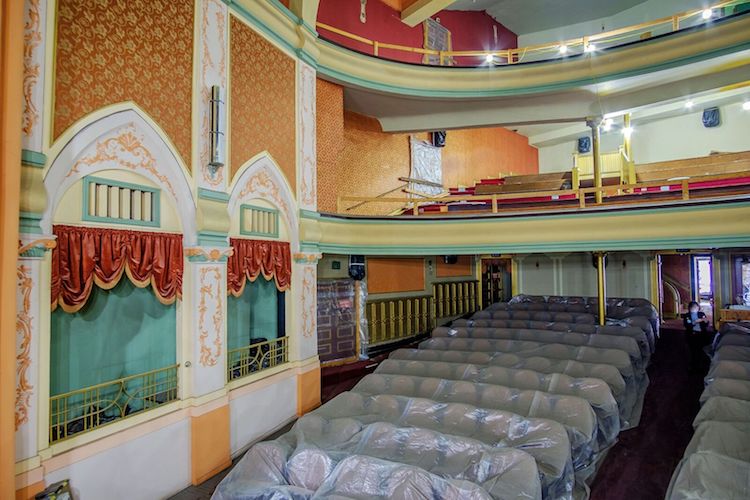
But like many communities across the Midwest, the human experience in Wabash has not always been as glamorous as the movies on the silver screen.
When large manufacturing employers left the Midwest in the 70s and 80s, much of the area’s population went with them.
So in some ways, the story of Wabash is similar to the story of the theatre itself: Enjoying times of prosperity in the past, and emerging with a new sense of purpose for a new time.
“What I’ve seen as a reaction to the decline is community members standing up and saying, ‘This community is important. This community has value, and we want to invest in it to make sure that it stays,’” Gatchel says.
One way the community is investing in itself is by rehabilitating Eagles Theatre.
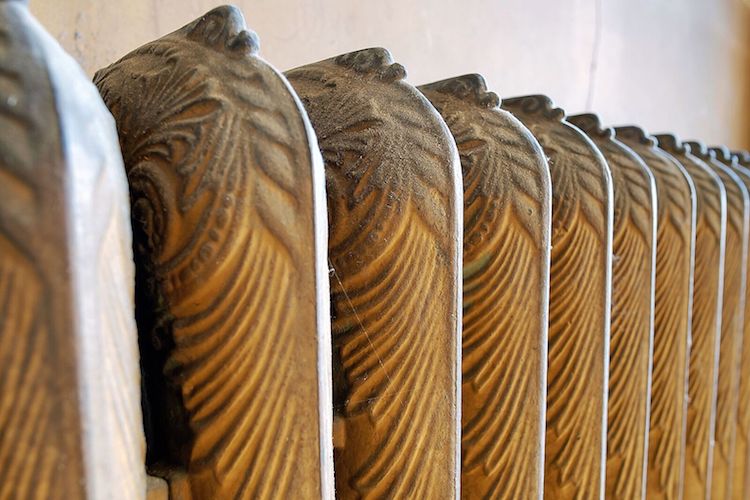
Since Honeywell acquired the space in 2010, it closed the theatre for renovations last fall. It’s hoping to reopen in 2019, and Gatchel and others are optimistic that it will be worth the wait.
For the last several decades, the four-story building opened only its first floor to patrons. But when renovations are complete, all four floors will be fit for reuse, including a grand ballroom on the top story.
“We haven’t been able to use the upper floor for the last 40 years,” says Hayley Beauchamp, Business Development Manager at the Honeywell Foundation. “Being able to utilize this spaces is I think one of the coolest portions of this project.”
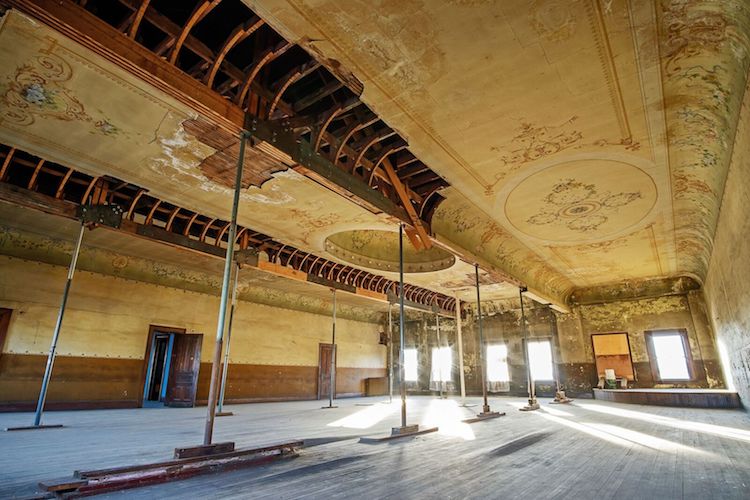
In their office about one block away from the theatre, Gatchel and Beauchamp talk excitedly about the theatre’s updated features, including a mobile movie screen so the space can be used for live performances, as well as autistic- and handicap-friendly features to bring the venue up to date.
The new space will actually have two theatres: one on the main level that seats 500 guests, and a new, intimate space on the lower level with 45 seats.

Even so, much of the original charm will remain because, as Gatchel says, that’s what makes the space special.
It’s not an iMax theatre, and it doesn’t have the flashy new 3D technology, or the latest sound system, but that’s not the point.
Instead, she talks about the success of the theatre’s sold-out showings of older, classic movies like “Breakfast at Tiffany’s,” where patrons have come from as far away as Warsaw dressed in black dresses and pearls like Audrey Hepburn.
“There’s nothing like seeing an old movie in this old theatre; it gives you a complete experience,” Gatchel says. “That’s the kind of the thing that makes it a unique experience.”
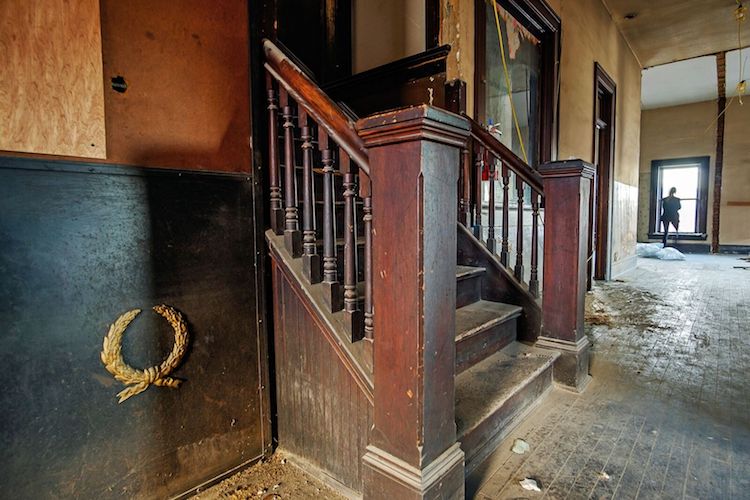
But as Kinney has seen with the Clyde in Fort Wayne, giving guests that updated-yet-historic experience is no small feat.
Gatchel says the Eagles Theatre renovation has been made possible by a combination of public and private dollars, particularly boosted when the City of Wabash was awarded one of Indiana’s highly coveted Stellar Community designations in 2014.
Without this designation and the grant that comes with it, the theatre might have still been renovated, Gatchel says, but the project would not have been as comprehensive.
“What this has allowed the city to do is to look at this building that is in the heart of downtown and reimagine it for a new life—a new purpose—not only for ourselves, but for the region.”
Historic theatres in other communities were not quite as lucky.
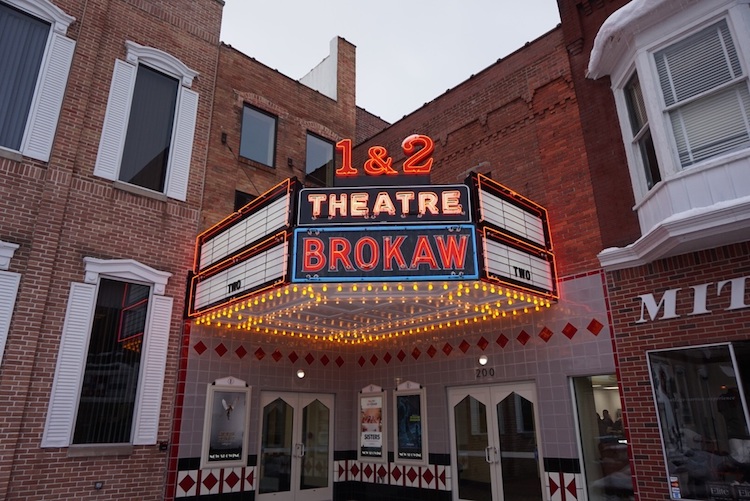
Cultural significance and modern convenience
The same year that Wabash won the Stellar Communities grant in 2014, the lake town of Angola also made a bid for the cash, and came up short.
Angola is home to two historic movie theatres only blocks away from each other in its downtown: The Strand and the Brokaw.
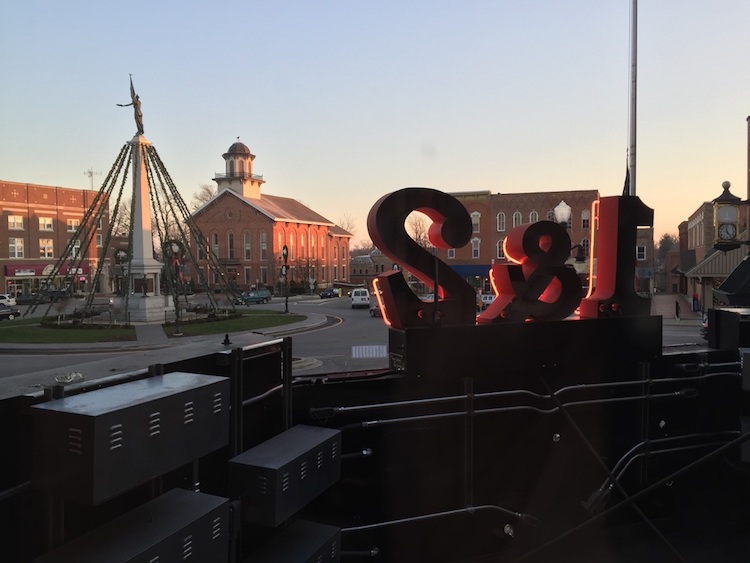
Winning the Stellar Communities grant would have given the City $15 million, and some of that money was slated for updating both of its theatres with the equipment they needed to survive in the digital age.
But when the grant did not come through, it was up to the theatres to upgrade their equipment themselves or get out of the game.
As a result, The Strand, which opened in 1914, ended up shutting its doors in 2016 after 102 years.
Since then, the theatre has been purchased by Sutton’s Deli in downtown Angola, and slated for reuse, sources at the Deli say.
Angola’s other theatre, The Brokaw, was able to update its equipment and stay open thanks to funding from Fort Wayne business investors Scott and Melissa Glaze who own a vacation home in the Angola area.
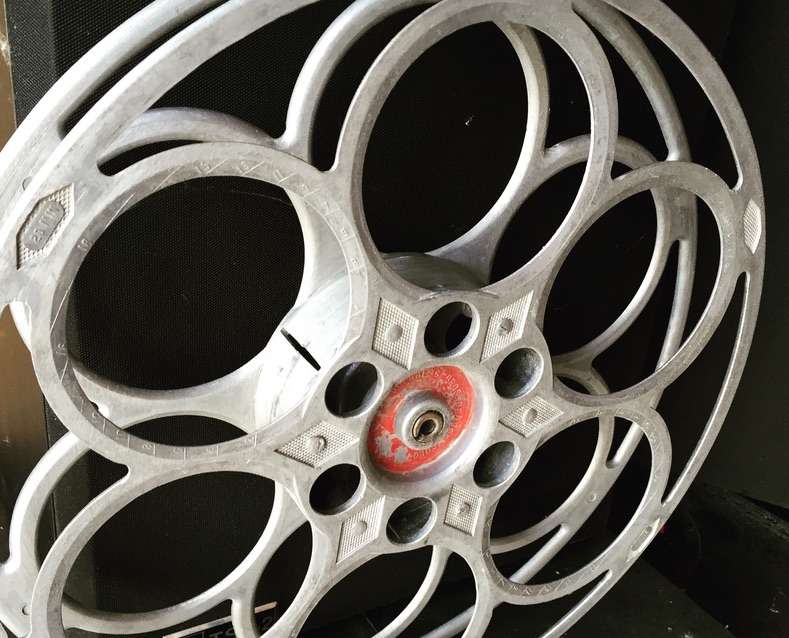
The Brokaw Theatre was originally opened in 1931 by an Angola Opera Manager named Joe Brokaw, and at the time, it showed films for 50 cents each. The art deco building was designed by the architect A.M. Strauss, who also designed the Embassy Theatre in Fort Wayne.
When the theatre first opened, it housed a single screen for 600 patrons. But in 1990 the screening room was divided into two showing areas, and it lost a considerable amount of space, says General Manager Dave Benson.
When the Glazes purchased the theatre in 2014, they closed it until Feb. 2016 to reconfigure its layout and return it to its original splendor with the conveniences of modern times.
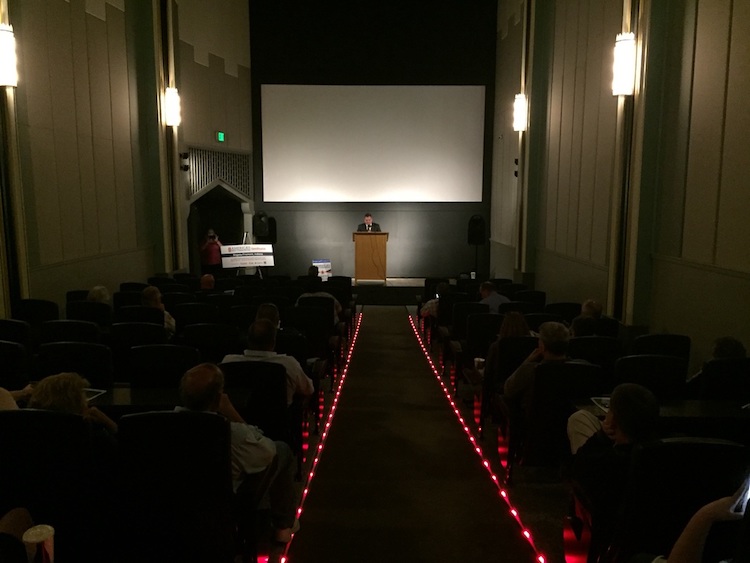
They updated the theatre from film to digital, and restored its large plaster columns and other art deco features. They even chose an art deco color scheme of black, white, red, and gold for its interior.
They also purchased the building next to the Brokaw, and converted it into a new concession and kitchen area for the theatre, adding ADA approved bathrooms and a new lobby with table and chairs.
The original lobby was then converted into a bar, Benson says.
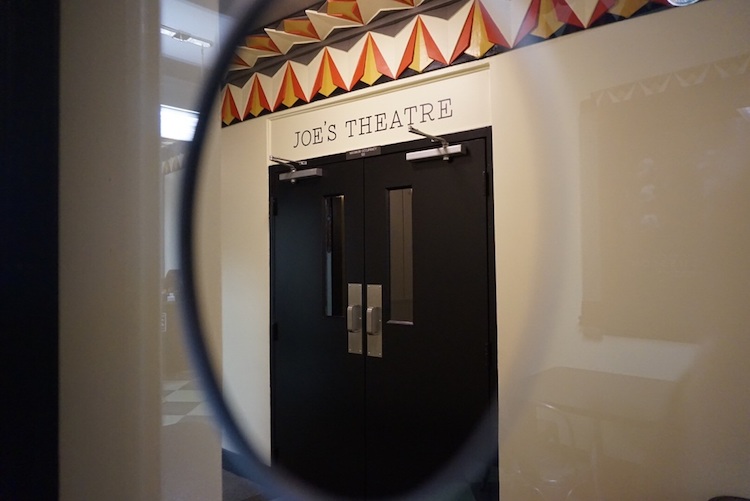
The newly christened Brokaw Movie House seats 122 in a large screening room and 91 in a smaller screening room.
Benson says the theatre is a popular hangout for Angola’s lake goers and Pokagon State Park visitors, as well as its locals.
While he works in Angola, he’s an Auburn resident, and the Glazes’ investment is what initially attracted him to the venue.
He was in the restaurant business as general manager at Mad Anthony’s Tap Room in Auburn for eight years. Then he began working for the Glazes at JK O’Donnell’s in Fort Wayne.
When they took on the Brokaw project, Benson says that was the next logical step for him, too.
“This theatre sounded like such a neat project, I wanted to take a chance on it,” he explains.
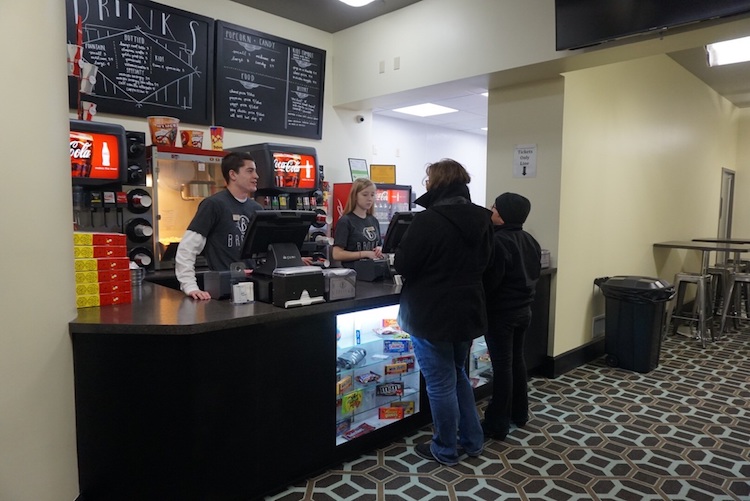
He came on staff in September 2016, and while he says he’s still learning the theatre management side of things, he feels that his experience in the restaurant industry has helped upgrade the dining and bar portion of the business.
He adds that many patrons are pleased to learn they can take their food and drinks into the show with them where tables and couches are available in back.
It’s a simple experience: Dinner and a movie, a classic night out re-imaged for a new time.
“People like the vintage look and feel of the theatre, but they like the modern amenities that we provide, too,” Benson says.

It’s that combination of old and new–cultural significance and modern convenience–that makes historic theatre renovations successful.
And when these projects are successful, northeast Indiana is, too.
“We need more cool art, music, and culturally infused entrepreneurs to spur development,” Kinney says. “The whole purpose of these projects is to fill that gap. We have to create these things if we want people to stay.”

